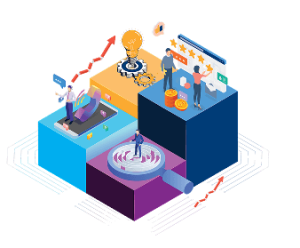
NPS Reflects the Past. CSAT Captures the Present. But How Do We Measure Success In the Moment?

For years, Net Promoter Score (NPS) has been the gold standard for measuring customer loyalty. It asks one powerful question:
“How likely are you to recommend us to a friend or colleague?”
It’s clear, quantifiable, and familiar across industries. However, it’s a lagging indicator. In 2025, we need to know what the customer experience is at any moment, not just over time.
NPS tells you what happened. CSAT tells you what’s happening.
But neither metric, on its own, captures the effort customers put in or the journeys they take to reach an outcome. And that’s where the real story unfolds.

Why NPS and CSAT Alone Fall Short
NPS provides a high-level view of advocacy, and CSAT captures immediate satisfaction — but both often miss the friction in between. Customers rarely think in terms of surveys; they think in terms of effort.
We’ve all counted clicks to place a website order, been stuck in an IVR or become frustrated by a chatbot that could not answer our question. In these scenarios, we are evaluating, “How easy is it to accomplish my desired goal?”
Gartner research highlights the stakes: 96% of customers with a high-effort interaction become more disloyal, compared to just 9% who experience low effort (Gartner, Winning the Customer Experience, 2022). That’s a massive gap that NPS or CSAT alone can’t explain because they are both reactive measures.
Research also shows that only a fraction of unhappy customers ever complain — the majority simply leave. That means relying only on NPS or CSAT risks missing the “silent churn.”
What if we could save the interaction real-time? Before the relationship is damaged.
The Shift Toward Effort and Journey Analytics
This is why Customer Effort Score (CES), (first popularized by Harvard Business Review and measures how much effort a customer must expend to achieve a task) and journey analytics are gaining traction. They go beyond “how happy were you?” and ask:
- How easy was it for customers to get what they needed?
- Where do customers get stuck or opt-out in the journey?
- Which moments make or break the relationship?
- How could I improve the interaction as it is happening?
Pros: Identifies friction points, actionable in real-time, highlights journey bottlenecks.
Cons: Doesn’t directly measure loyalty or emotional sentiment.
Harvard Business Review reinforces the importance of experience: customers who had the best past experiences spend 140% more than those who had the poorest (HBR, The Value of Customer Experience, Quantified). When journeys are smooth, customers stay longer, buy more, and advocate louder.
CES, when combined with journey analytics, helps CX teams pinpoint where customers get stuck and which moments impact loyalty. Common friction points include onboarding, support resolution, enrollment, or checkout. When organizations redesign these journeys, they see tangible results — faster onboarding, reduced churn, higher digital adoption, and improved cost efficiency. These are outcomes no single survey metric can deliver in isolation.
Companies that take journey analytics seriously see tangible business impact. McKinsey reports that organizations using journey analytics achieve a 15–20% reduction in service costs and a 10–15% increase in revenue (McKinsey, Journey Analytics and CX Transformation, 2023).

Visualizing the Journey
For instance, a poor onboarding journey — requiring multiple follow-ups and repeated interactions — increases customer effort and risk of churn. Companies like @inQuba highlight similar friction points in their CX examples. Visualizing these journeys helps teams pinpoint problem areas and prioritize improvements effectively. In the best-case scenarios, we can nudge the customer now to course-correct a negative interaction into a positive one.
Examples include:
- A customer places an item in a virtual shopping cart but does not place the order. The company presents them with a 10% coupon in the moment.
- A new member abandons the enrollment process for health insurance. The insurance company sends them an email or text message reminding them to complete the process.
- A customer has ordered a new credit card but has not made their first purchase. A notification message that would award them 5,000 bonus points after their first $100 purchase.

Image Source: https://www.inquba.com/
From Scores to Outcomes
By acting on CES and journey insights, companies can improve satisfaction, reduce friction, and boost both loyalty and revenue.
This is the real evolution of CX measurement: from scores to outcomes.
- NPS tells you if customers would recommend.
- CSAT tells you how they felt about an interaction.
- CES and journey analytics show you why they behave the way they do — and what you can do about it now.
At Servion, we’ve seen this shift firsthand. Many of our clients began their CX transformation by tracking NPS and CSAT but struggled to act on the insights quickly enough and lost customers. By introducing Customer Effort Score (CES) and applying journey analytics, we’ve helped organizations uncover friction points that traditional surveys missed. The result? Faster resolution times, measurable reductions in service costs, and a more loyal customer base.
It’s not about replacing one metric with another — it’s about building a connected measurement framework that drives both customer satisfaction and business outcomes.
“Imagine if you could save a customer before they stopped doing business with your company. What would that be worth?” Mike Pietig
Looking ahead, AI and automation will play a role — but without journey context, nudges risk being mistimed or irrelevant. The future lies in combining intelligence with journey analytics to act in the right moment, through the right channel.
Final Thought
In a world where one poor experience can cost you a loyal customer, waiting for quarterly NPS scores is simply too slow.
- NPS shows where you stand.
- CSAT shows where you’re slipping.
- CES and journey analytics show you why — and how to fix it.
As we move further into 2025, organizations must rethink how they measure success — not just from the top down, but across every customer journey that matters.

ABOUT THE AUTHOR
Mike Pietig is the Vice President of Client Success at Servion, where he leads a global team focused on client outcomes, satisfaction, and long-term value realization across industries.




